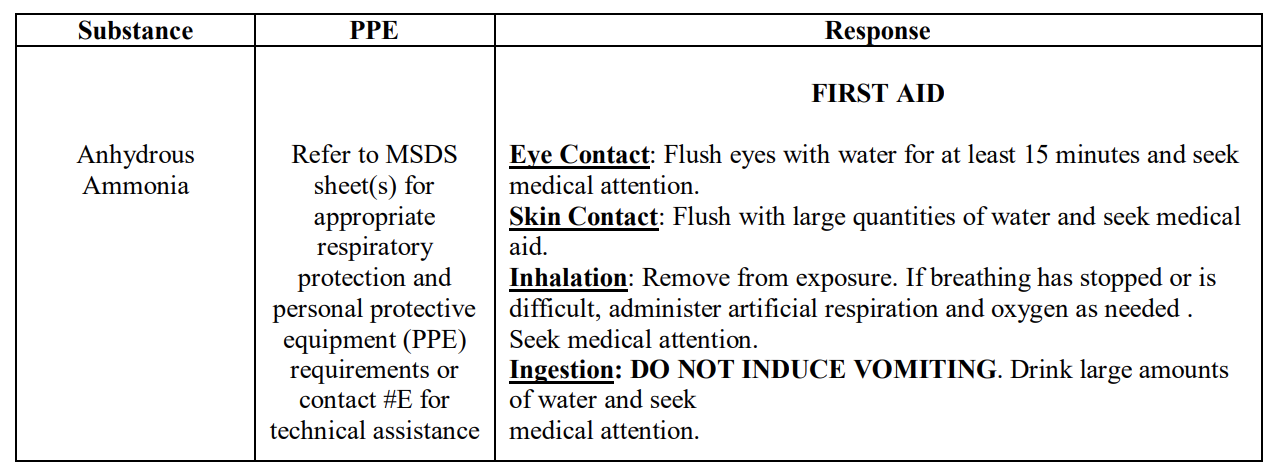THIS CASE IS NOT A FINAL ORDER OF THE REVIEW COMMISSION AS IT IS PENDING COMMISSION REVIEW
This case arose from an anhydrous ammonia (NH3) release that occurred on May 23, 2017, at a Power Plant. OSHA conducted an investigation and subsequently issued a two-item citation for alleged violations with proposed penalties of $18,108. In this case, the OSHRC discussed when a response to a release is an emergency response, what the contents of the Emergency Response Plan must be, and what type of respirators must be worn by the first responders on scene.
SAFTENG NOTE: some references to Pressure Relief Valves (PRV) appear to be more like Pressure Control Valves (PCV); however, the actual RV’s do discharge into the water sump.
The company operates a coal-fired power plant and uses anhydrous ammonia in its Selective Catalytic Reduction (“SCR”) system to lower the amount of NOx emitted from its boilers. Instead of storing large quantities of NH3, they receive it on an as-needed basis via a pipeline from a Pipeline Company. The ammonia skid is the portion of the site where the pipeline comes above ground and the NH3 is reduced in pressure and then heated to form a vapor to be used in the SCR. The consists of two identical ‘trains’ (A train and B train). Typically, only one train is in use at a time. All of the pressure relief devices associated with the ammonia skid have their discharge sides hard piped into a water-filled sump. The ammonia system is continuously monitored and remotely controlled by the distributed control system (“DCS”). Its displays/interfaces are seen by the operators in the control room. The entire skid rests on expanded metal decking and is several feet above the ground. There are atmospheric ammonia detectors installed in several locations on the skid. There are emergency breathers located at the top of each of the three sets of stairs leading up to the skid. There is also a windsock at the northwest comer of the skid. The water-filled sump is located below ground level and beside the southwest stairs. There is a remotely-operated emergency shutoff valve located just after the piping emerges from underground to the north of the raised skid. There is another emergency stop station across the street from the south side of the skid.

